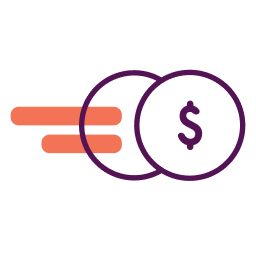Small business owners suffering from the ravages of COVID-19 who weren’t able to obtain funds that were part of the first round of the Paycheck Protection Program (PPP) or the Economic Injury Disaster Loan (EIDL) program are going to get a second chance. Congress today approved an additional $310 billion in SBA PPP loans in addition to $60 billion specifically earmarked for the smallest small businesses that were left out of the first round.
Missed out on EIDL & PPP Loans? Nav has a network of small business lenders we can match you with.
Since the SBA ran out of funds last week, community banks, online lenders, and other fintech providers have been scrambling to help their small business customers prepare for this additional round of financing. These are the very lenders in the best position to help the smallest, and most underserved, small businesses obtain the financing they need to keep their businesses afloat during the crisis caused by the coronavirus.
What’s Different About This Round of Funding
The straight scoop is that this legislation, like it’s predecessor, remains complex. For the most part, you should expect loan requirements to remain the same—even with the additional consideration for traditionally underserved small businesses. Once the bill is signed into law by the President, we expect funds to be available sooner rather than later.
The Field of Lenders Includes More Community Banks, Online Lenders, and Fintech Institutions
This is a win for small businesses for a number of reasons:
- Unlike the first round, your status as an existing banking customer doesn’t matter. Online lenders, fintech institutions, and community banks have spent the last few weeks preparing for the influx of SBA loan applications by encouraging their customers to start, or complete their applications now, so they can be submitted as soon as the SBA is ready to receive them. If you haven’t started an application yet, our advice is to begin today. This new cadre of lenders is anxious to build new relationships, so your current status with them will likely be a non-issue.
- These online lenders are already servicing smaller small businesses. In other words, if you have less than 20 employees—or even none other than yourself—these lenders are used to working with businesses like yours and are better equipped to help shepherd your application through the SBA loan application process. For example, our partners were approving PPP loan offers of $50,000 or less; which tells us they are approving many smaller businesses like sole proprietors or those with fewer employees. This bodes well for Main Street, at least in my opinion.
- Unlike more traditional SBA lenders, these lenders are better equipped to accept an online application and respond quickly. This was a bottleneck for many traditional lenders and a frustration for borrowers during the first round of PPP financing. Putting an application online is not the same thing as having an online application—which was one of the challenges these traditional lenders faced with the online nature of many of the PPP loan applications.
- Online lenders and fintech institutions have spent the last two weeks ramping up. Online and fintech companies are better prepared to digitally process and prepare loan applications than their more conventional counterparts—and are already prepared to start submitting applications for those small business owners who completed their applications in anticipation of this new round of funding.
The SBA is Advising Big Businesses Need Not Apply
A number of highly capitalized public companies and educational institutions were able to win PPP funds in the first round of funding which enraged small businesses owners all across the country, as a result the SBA is admonishing all borrowers to consider the certification they make that “[c]urrent economic uncertainty makes this loan request necessary to support the ongoing operations of the applicant.”
Although the bills language or the guidance from the SBA has not changed, this is the first time the SBA has publicly responded to large public firms like Shake Shack, Ruth’s Hospitality Group, and Harvard being among the first to receive the government-backed loans that were intended to help small businesses keep employees on the payroll.
The Legislation Includes Special Provisions for the Smallest Small Businesses
The legislation specifically sets aside $60 billion for community financial institutions, small insured depository institutions, and credit unions to help the smallest small businesses access capital within their communities.
Who Is Eligible?
The eligibility requirements have not changed. Qualifying small businesses are generally defined by the SBA as:
- Businesses with fewer than 500 employees (with some exceptions)
- Businesses that meet the SBA’s industry-based size standard requirements for the applicable NAICS code, which are based either on number of employees or annual receipts (you can see if your business credit reports list your NAICS code by pulling your business credit reports for free on Nav)
- Not-for-profits (except those receiving Medicaid funds)
- Veterans organizations
Franchises and hospitality businesses (NAICS code 72) with multiple locations, even if they have more than 500 employees, may be exempted on a per location basis as well as any businesses receiving financial assistance from a Small Business Investment Company (SBIC).
How Much Can You Apply For?
The maximum loan amount will be the lesser of $10 million and 2.5 times the average monthly payroll costs for the one year period before the loan is made, with consideration for any seasonality-based adjustments or a shorter period for businesses less than a year old.
You Should be Thinking About Loan Forgiveness When You Apply
Although PPP loans come with the most attractive business loan terms most of us will ever see in our lifetimes (1% for 2 years), you will probably want to make sure you take the proper steps to ensure that your PPP loan is forgiven. The PPP is intended to allow business owners, including those who are self-employed, to apply for a loan amount 2.5 times their average monthly payroll. The following SBA payroll criteria will help you make the calculation to determine your loan amount as well as what expenses will be forgivable..
Average Monthly Payroll costs include:
- Salaries, tips, and commissions
- State and local employer payroll taxes
- Health insurance premiums
- Employee retirement plans
- Net profit (if you’re self-employed)
The CARES Act SBA Loan Calculator will help you determine how much you may qualify for within the PPP program before you start an application.
What Payroll Documents are Required for a PPP Loan Application?
The CARES Act states that you’ll need to present the following documents to your lender when you apply as well as with your application requesting forgiveness for your PPP loan:
- Payroll tax filings reported to the Internal Revenue Service
- State income, payroll, and unemployment tax filings
- Documentation, including cancelled checks, payment receipts, transcripts of accounts, or other documents verifying payments on covered mortgage obligations, payments of covered lease obligations, and covered utility payments
- Any other documentation the SBA Administrator determines is necessary.
The SBA guidance also states that, “No eligible recipient shall receive forgiveness under this section without submitting to the lender that is servicing the covered loan the documentation required…”
The Requirements Differ Slightly for the Self-Employed
Self-employed individuals without any employees and file IRS Form 1040-C will need to calculate their payroll expense differently. Use net profit for the business from 2019 as reported on line 31 of the Schedule C. You can use up to $100,000 of net profit, divided by 12 to get the average monthly net profit. Then multiply that number by 2.5 to get the maximum loan amount.
If you haven’t filed your 2019 taxes yet, that is OK. You will need to have them prepared though to submit your application. You can read more about applying as a self-employed individual HERE.
Start Documenting Expenses as Soon as You Receive the Funds
PPP funds are intended to cover your payroll expenses for the eight-week period following the first disbursement of the PPP funds. In other words, the clock is ticking and you need to make sure you document every expense as soon as you receive funds—or you could run the risk of losing the loan forgiveness. The lender, according to the SBA, must make the first disbursement within 10 calendar days.
Some business owners are putting the PPP funds in a separate bank account to make tracking and accounting payroll expenses easier. That’s not a requirement. My advice is to establish a practice to ensure you can account for exactly how you used the funds and verify with the documents mentioned above.
Make Sure Your Bookkeeping is Up to Date
As you apply for this new round of PPP funds make sure you are thinking about how much you apply for and how you plan to use it with forgiveness in mind.
- Make sure your bookkeeping and accounting process are in order.
- Document every expense so you can validate it later when you apply for forgiveness.
- Talk to your attorney or tax advisor to make sure you are clear on how you can, or can’t, use the funds.
You can learn more about PPP loan forgiveness HERE.
Please keep in mind this information is changing rapidly and is based on our current understanding of the programs. It can and likely will change. Although we will be monitoring and updating this as new information becomes available, please do not rely solely on this for your financial decisions. We encourage you to consult with your lawyers, CPAs and Financial Advisors. To review your real-time funding options with one of Nav’s lending experts, please contact us.
This article was originally written on April 23, 2020 and updated on January 20, 2021.


I am here looking for help to upgrade my business